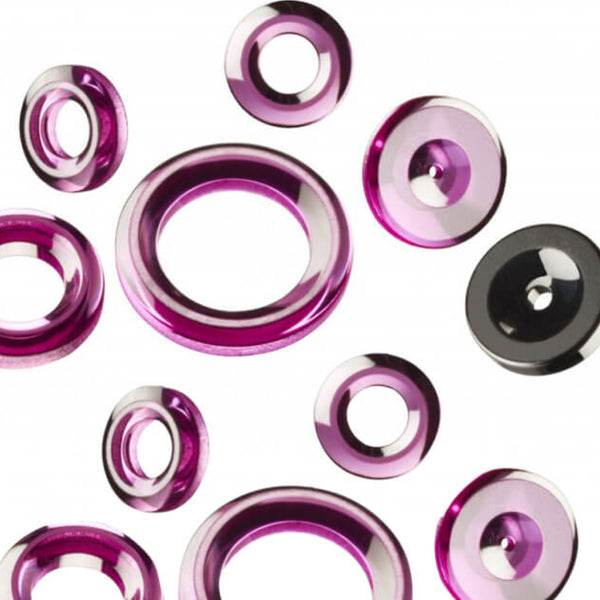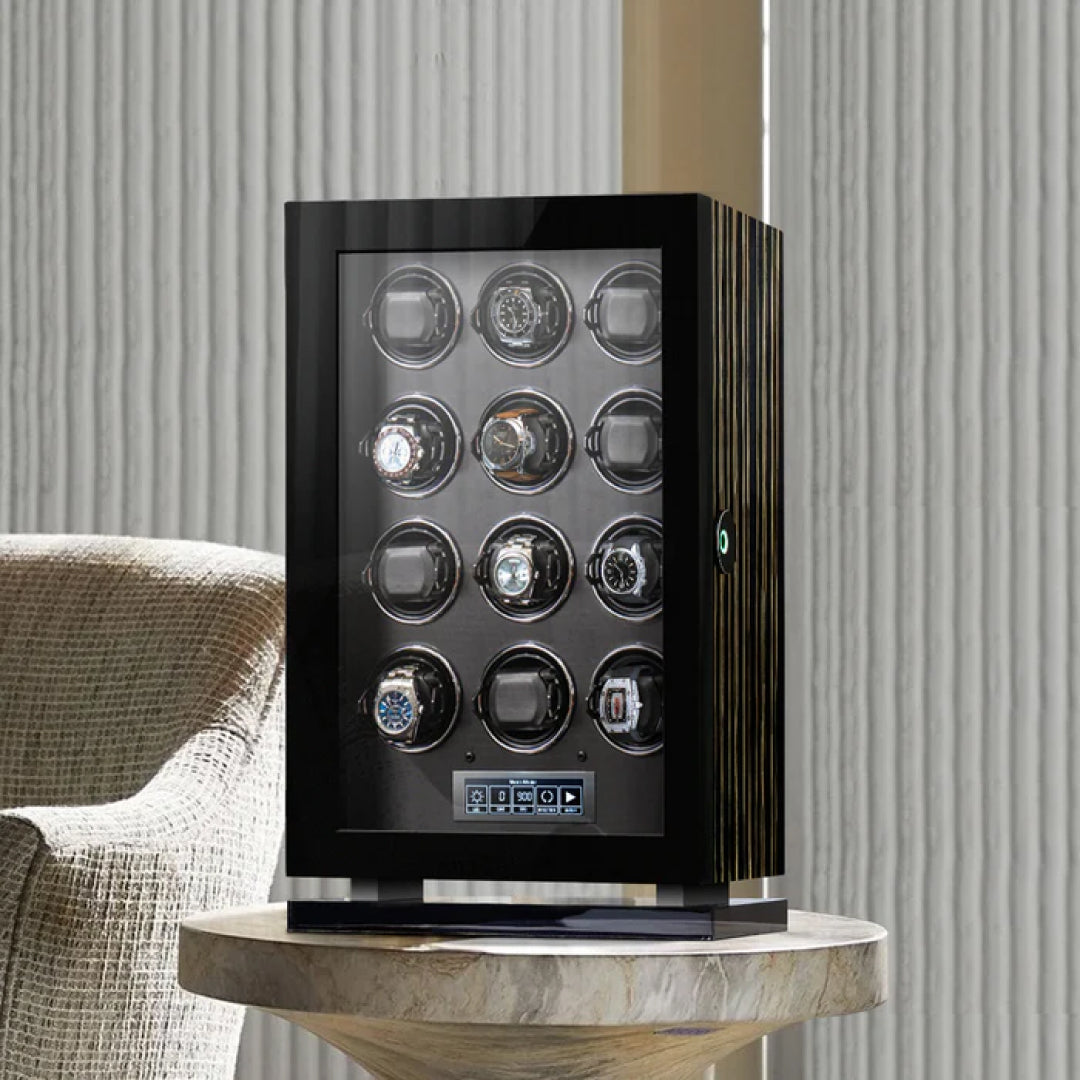Have you ever gazed at your watch and wondered what lies beneath its elegant face? Beyond the glimmer and sheen, a fascinating world of intricate mechanics is working to keep time with remarkable precision. Let’s talk about an unsung yet essential component in this world: watch jewels.These tiny yet crucial elements are far more than decorative; they’re the backbone of timekeeping, ensuring that your watch stays accurate and durable. So, why do watches have jewels? Let’s dive into the essential function of these gems, explore their history, and understand how they impact the accuracy and longevity of your timepiece.
The Essential Role of Watch Jewels

Jewels in watches, contrary to what one might assume, aren't there for ornamental purposes. They serve a functional role, primarily to reduce friction in the movement. These are done by placing synthetic rubies or sapphires strategically in parts of the watch movement. Their hard surface, rating a "9" on the Mohs hardness scale, ensures that the metal components of the watch can move freely without excessive wear. Watch jewels serve as:
Functionality Over Aesthetics
Despite their name, watch jewels are not for decoration. They serve a crucial functional role in the movement of a watch.
Friction Reduction
The jewels provide hard, smooth surfaces for the pivots of the watch's gears, reducing wear and tear. This is vital because friction between metal parts can cause variations in timekeeping and lead to premature wear.
Material
Although these timepieces utilize use natural rubies, it is not uncommon for modern watch jewels to use synthetic sapphire or ruby. These synthetic stones have the same properties as their natural counterparts but are more consistent in quality and less expensive to produce.
Placement
The watchmakers strategically place jewels in parts of the watch movement that experience the most wear, such as the balance wheel pivots.
Jewel Count
Watches often specify their "jewel count," which indicates the number of jewels used in the movement. A higher jewel count can sometimes indicate a more complex and precise movement, but this isn't a strict rule. A typical fully jeweled time-only watch has 17 jewels, but more complicated movements can have many more.
Not for Ornamentation
Strategically, the watchmakers place jewels in the parts of the movement that experience the most wear, such as the balance wheel pivots, to minimize friction and increase longevity.
You might also like: Audemars Piguet vs Rolex: An Ultimate Battle Between Two Luxurious Watch Brands (2023 Review)
A Glimpse into Their History
The use of jewels in watchmaking isn't a recent phenomenon. Their history traces back to the early 1700s when Swiss inventor Nicolas Fatio d Duilier, along with brothers Peter and Jacob Debaufre, introduced jewel bearings. Initially, these jewels were made of diamonds and corundum (rubies or sapphires).

Over time, as the benefits of reduced friction and increased accuracy became evident, the use of jewels in watches became widespread. Today, watchmakers use synthetic versions of these gemstones, making high-quality watchmaking more accessible.
Deciphering the Jewel Count

A common term you might come across when delving into watch specifications is the 'jewel count'. This refers to the number of jewels incorporated into the watch movement. A fully jeweled watch typically has a count of 17 jewels, but some high-end models can have up to 21 jewels or more. The jewel count can be an indicator of the watch's quality and precision.
You might also like: Halloween Wrist Watch Trends 2023, From Ghoulish to Glam!
Understanding the Various Types

Watch jewels come in various types based on their specific functions and placements within the movement. Here are the main types of watch jewels:
- Hole Jewels: These are the most common type of jewel and are used as bearings for the pivots of moving parts like gears. They are typically cylindrical with a hole in the center.
- Cap Jewels (or Endstones): These are flat jewels placed on top of hole jewels, especially in high-friction areas like the balance wheel pivots. They help distribute the load and reduce wear.
- Pallet Jewels: Found in the pallet fork of the escapement mechanism, these jewels interact with the escape wheel to regulate the release of energy from the mainspring.
- Roller Jewel (or Impulse Jewel): This jewel is attached to the balance wheel's roller table. It interacts with the pallet fork to transmit impulses between the escapement and the balance wheel.
- Jewel Bearings: These are hole jewels specifically used for the wheel train. They reduce friction between the moving wheels and the stationary parts of the watch.
- Shock-Absorbing Jewels: Some watches, especially sports watches, use jewels in shock-absorbing settings (like Incabloc or Kif) to protect the movement from impacts. These systems usually have a spring-loaded setting that allows the jewel to move slightly upon impact and then return to its original position.
- Pallet Fork Horn Jewels: These are less common and are used in some high-end or vintage watches. They reduce friction where the pallet fork interacts with the balance wheel.
Enigwatch's Top Watch Winder Selections
Watch jewels hold immense significance in the intricate world of horology. These tiny components, often overlooked, play a pivotal role in the precision and longevity of a timepiece. But how do you ensure that these jewels remain protected, especially when the watch isn't on your wrist? The answer lies in a quality watch winder.
Virtuoso™ 6 Watch Winder: The Guardian of Precision

The Virtuoso™ 6 isn't just any watch winder; it's a fortress for your timepiece. It ensures that it shields the delicate watch jewels from potential harm with meticulous attention to detail. The advanced winding mechanism respects the intricate nature of watches, ensuring it winds them just right and preserves the integrity of each jewel. Experience the difference and provide your watch with the best kind of protection.
Impresario™ Series 12 Watch Winder: The Ultimate Safeguard

For those with an expansive collection, the Impresario™ Series 12 stands as a beacon of protection and luxury. Tailored to cater to multiple timepieces, its state-of-the-art technology ensures each watch, with its intricate watch jewels, receives individualized care. Beyond its protective features, its design exudes sophistication, making it not just a winder but a statement piece. Discover the unmatched protection and elevate your collection's safety and stature.
Conclusion
Watch jewels, with their functional significance and rich history, are a testament to the intricate world of watchmaking. They underscore the blend of artistry and engineering that goes into crafting a timepiece. So, the next time you admire a watch, remember that beneath its face lies a world of jewels working tirelessly to ensure its impeccable performance.

















